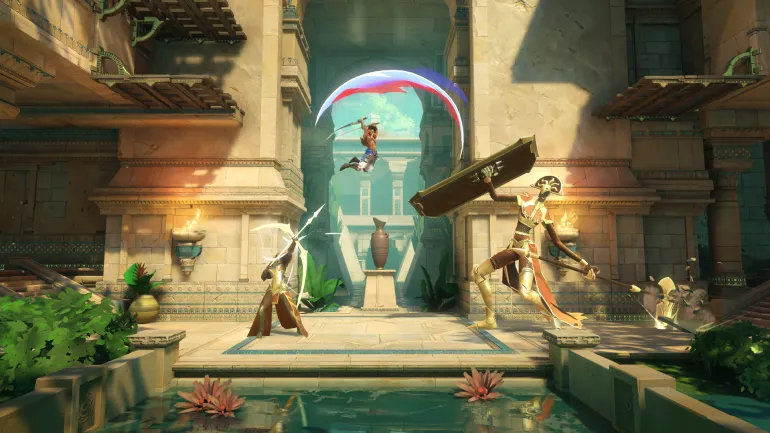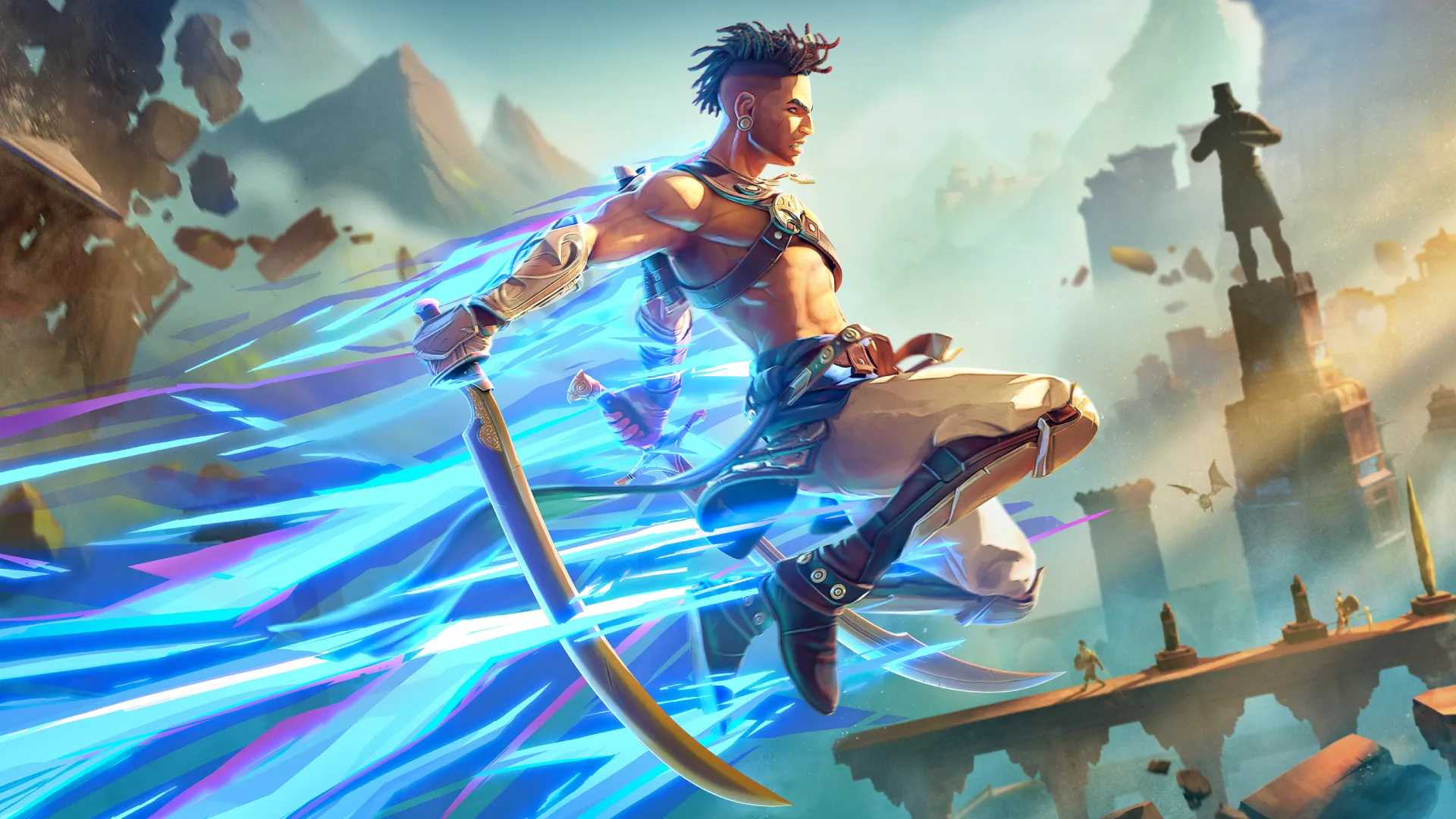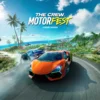Long before the popular Assassin's Creed series, the Prince of Persia games captivated players with their thrilling parkour action and vaguely historical settings. Despite the anticipation for the promised remake of the beloved Sands of Time, fans can still enjoy the latest installment in the series, Prince of Persia: The Lost Crown. Priced at $49.99 and available on Nintendo Switch, PC, PlayStation, and Xbox, this game takes inspiration from the original side-scrolling roots of the franchise and reimagines it as a modern Metroidvania title. The result is a truly fantastic release that has earned the prestigious Editors' Choice award for action games.
Origins Unveiled
Jordan Mechner’s original Prince of Persia game, which came out in 1989, was revolutionary in its use of rotoscope animation to create a cinematic experience. This attention to detail and realism has always been a hallmark of the series, and it only grew stronger with the Hollywood adaptation. The Lost Crown, while existing in its own universe separate from other Prince of Persia games, successfully immerses players in the franchise's grand vision. From its stunning visuals to its captivating storyline, the game effortlessly captures the essence of what makes Prince of Persia such an iconic and beloved series.
In the immersive game, players assume the role of Sargon, a brave and determined young member of the renowned Immortals warrior group. Tasked with the perilous mission of rescuing the kidnapped Prince, Sargon must venture into the cursed Mount Qaf, a place inspired by Persian mythology. As he delves deeper into the treacherous mountain, he discovers a world teeming with menacing monsters and a peculiar detachment from time itself. Every passing second for Sargon feels like a lifetime for the trapped souls he encounters along the way.
What starts as a seemingly straightforward rescue mission soon unravels into a complex web of conspiracies and moral dilemmas. The ingenious use of time manipulation in both the plot and gameplay mechanics adds an intriguing layer to the game. While the initial introduction may feel a bit sluggish, with an abundance of dialogue and setup, the eventual payoffs that await players after hours of exploration are undeniably rewarding.
Enigmatic Landscapes
Mount Qaf, the setting of Prince of Persia: The Lost Crown, is a breathtaking masterpiece of level design. This sprawling map is not your typical linear progression, but rather a complex web of interconnected pathways and hidden secrets waiting to be discovered. What sets this game apart from others in the Metroidvania genre is its innovative approach to accessing new environments. Instead of finding keys or unlocking doors, the protagonist gains new powers that allow them to traverse previously inaccessible areas.
This dynamic gameplay mechanic adds a layer of excitement and discovery to the game, making every new power feel like a key to unlocking a whole new world. Prince of Persia: The Lost Crown not only pays homage to the classics like Castlevania: Symphony of the Night and Super Metroid, but it also stands proudly alongside them as one of the best games in the genre. Its intricate level design, captivating storyline, and stunning visuals make it a must-play for fans of the genre, rivaling the likes of Metroid Dread and Ori and the Will of the Wisps.
In the genre of games that require frequent revisits to levels, satisfying level design is absolutely essential. The Lost Crown, developed by the same Ubisoft team behind the renowned Rayman platformers, understands this importance and delivers intriguing 2D obstacle course layouts. The stages in this game are exceptionally well-designed, ensuring that players do not get lost.
Even in the most challenging gauntlets, the developers have cleverly incorporated looping paths that eventually lead back to the beginning, allowing players to unlock shortcuts and eliminate the need for repetitive playthroughs. This thoughtful approach to level design enhances the overall gaming experience, keeping players engaged and motivated to progress further.

Memorable locales play a crucial role in maintaining one's mental map, whether they be ancient cities steeped in history or serene sylvan landscapes. While The Lost Crown may not match the atmospheric intensity of Metroid Dread, it compensates with a vibrant and energetic Saturday morning anime style that keeps players engaged and excited. The game's visual appeal is further enhanced by its flashy animation effects, accompanied by a lively fusion of Middle Eastern and hip-hop music composed by Mentrix and Gareth Coker.
Not only does The Lost Crown deliver an enjoyable gaming experience, but it also performs exceptionally well on the PlayStation 5, maintaining a seamless 60 frames per second at 1080p resolution. For those playing on PC, the performance is even more remarkable, boasting an impressive 120 frames per second at 4K resolution.
The Lost Crown, a game centered around exploration, offers players a plethora of hidden treasures to discover. With the freedom to tackle main tasks in any order, as well as the option to embark on side quests to hunt for collectibles, the game provides a sense of autonomy and excitement.
There were moments when I found myself perplexed regarding the significance of certain collectibles. Distinguishing between valuable currencies that could be used for upgrades and mere trinkets that merely contributed to the game's lore proved challenging. Nevertheless, this slight ambiguity in collectibles is not uncommon in Ubisoft games, adding a touch of filler that many fans have come to expect and enjoy.
Empowering Adventures
Metroidvania titles are known for their intricate and detailed maps, which are crucial for guiding players through the game world. However, a game would feel empty and lacking if all it offered was a well-designed map. Thankfully, Prince of Persia: The Lost Crown not only excels in creating a captivating and expansive map, but also ensures that its gameplay mechanics are just as satisfying as the exploration itself. The protagonist, Sargon, possesses incredible agility, allowing him to perform impressive backflips, swift dashes, and gravity-defying wall climbs.
Engaging in combat feels fluid and ferocious, as players can effortlessly slash through their foes. The addition of a bow and arrow allows for a versatile and strategic approach to battles. In addition to offensive abilities, the game also provides defensive options, such as expertly timed dodges and parries, which can be followed by devastating counterattacks. This tactical depth resembles the mechanics found in beat ‘em ups or platform fighters, adding an extra layer of excitement and challenge to the gameplay experience.
Although not classified as an RPG, this game offers players the opportunity to personalize their character through the purchase of weapon upgrades and the discovery of unique amulets. These amulets bestow various perks upon the player, with one enhancing their ability to locate hidden treasure, while another imbues their sword with the power to shoot energy beams. In the heat of battle, players can charge up a meter to unleash devastating super attacks. One particularly impressive attack takes the form of a colossal blast that engulfs the entire screen, proving particularly effective against bosses who prefer to keep their distance.
Combat is fantastic from the start, but as you progress you gain increasingly ingenious time-manipulation powers. One power lets you freeze a version of yourself in the past that you can return to at the push of a button. A puzzle may ask you to jump, leave your duplicate suspended in mid-air, activate a platform, and return to your duplicate who can now safely land.
The combat in this game is nothing short of fantastic right from the beginning. The fast-paced action and intense battles keep players on the edge of their seats. However, as you progress through the game, you are rewarded with increasingly ingenious time-manipulation powers that take the combat to a whole new level. One of these powers allows you to freeze a version of yourself in the past, creating a duplicate that you can return to at the push of a button. This power adds a fascinating twist to the gameplay, as it opens up a world of possibilities for solving puzzles and overcoming obstacles.
For instance, you may come across a puzzle that requires you to jump across a large gap. With the ability to freeze a version of yourself mid-air, you can leave your duplicate suspended in mid-air, activate a platform or bridge, and then return to your duplicate who can now safely land on the newly created path. This clever use of time manipulation not only adds a layer of complexity to the gameplay, but also showcases the game's innovative and creative approach to combat mechanics.
One of the highlights of the game is the gradual acquisition of standard Metroidvania skills such as double jumps and a grappling hook. However, what sets this game apart is its clever presentation of more unique ideas right from the beginning. This approach allows players to become familiar with these innovative mechanics early on and use them throughout their entire adventure.
The game exudes a palpable confidence in these concepts, and it is evident in the intricate and mind-bending puzzles that players will encounter. These brain teasers are reminiscent of the challenging puzzles found in acclaimed games like Braid or Portal, promising a thrilling and intellectually stimulating experience for players.


The game's modern difficulty options offer a sigh of relief for players. With the ability to adjust factors such as the parry window length and enemy damage, the game caters to individual preferences and skill levels. This is especially crucial considering the demanding platforming sequences that require a high level of precision.
For those who may find certain sections too challenging, there is the option to skip them entirely by teleporting past with a simple toggle. Furthermore, the game goes above and beyond by making exploration easier. Instead of solely relying on waypoints, players can opt to have the next major goal displayed on the map, providing a helpful guide for their journey.
Despite its breezy nature, this game offers a substantial experience, especially considering its affordable price. Players should anticipate spending a minimum of 15 hours immersed in the adventure. It is an exciting prospect to witness speedrunners meticulously dissect and master this game, pushing its boundaries and revealing hidden depths.
Verdict
Prince of Persia: The Lost Crown is a remarkable game that showcases the enduring appeal of the 2D Metroidvania genre. From its captivating exploration to its exhilarating combat, this game is a true gem. The intricately designed world is a joy to navigate, with its hidden paths and secrets waiting to be discovered. Every step feels rewarding, as players uncover new abilities and unlock previously inaccessible areas.
The combat is equally satisfying, with fluid and responsive controls that make every encounter a thrilling dance of precision and skill. But perhaps the most significant achievement of The Lost Crown is the reminder it provides that the Prince of Persia series should never have been abandoned. This game is a testament to the potential and brilliance that lies within the franchise, and it only whets the appetite for more adventures in the future.






